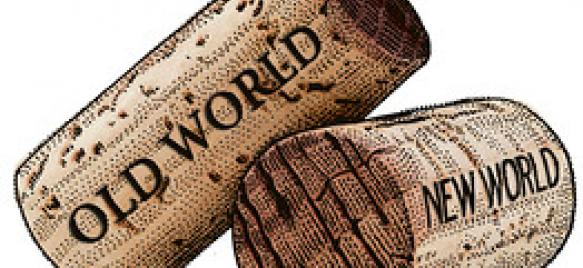
If you hang around wine people, you’ll hear the phrases new world versus old world wines. It seems like a simple phase but it has meaning for taste and other factors when you drink each of these wines.
Larger scale wine production started with the Greeks and Romans and they carried their wine making knowledge as they conquered the areas around the Mediterranean. The Middle East, France and Spain all benefited from the Romans and their knowledge. Basically, this is the Old World.
New World wines come from more recently developed areas and in particular, areas that came to the wine game later, well after the Roman expansion. America, Chile, Argentina, Australia and New Zealand are the typical New world wine regions.
Most of the popular grapes are grown in all these regions, albeit with different names, Cabernet Sauvignon, Merlot, Chardonnay and Syrah (or Shiraz) are grown in almost all these areas. Of course, there are usually indigenous grapes that have very local flavor and character.
Beyond where the grapes are grown, what are the differences in what you smell and taste in Old World and New World wines? It generally comes down to fruit, and non-fruit.
We’ve all heard those wine snobs bloviate about the slightly tart Macintosh apple or slightly charred blood orange smells they pick up when they plunge their nose into a freshly poured glass of wine. I used to be a skeptic. In fact, I have accused more than a few friends of making it all up.
Over time, I have practiced smelling the wines I drink, before pouring back an ample swig. It turns out you can learn to smell what is in the glass. In my opinion, it is more about lacking the vocabulary to describe what your nose is picking up. There has been some research that indicates the human nose can discern up to 1 trillion different scents. While this seems optimistically high, even if they were off by a factor of a million – we could still smell 1 million different scents. The problem is, the Oxford dictionary only shows just over 170,000 English words in current usage. You have a hard time explaining a million smells with 200,000 words – most of which have nothing to do with smell.
The good news is that practice involves drinking more wine. I would take a glass of wine smell and basically free associate whatever it made me think of. I didn’t filter and just went until I couldn’t come up with any more descriptors. You’d be amazed at how many you can develop with a few good whiffs. Over time, you’ll get better and better at describing the wine you smell and what is in the glass.
To start though, let’s make this simple. When you smell the wine, ask a simple question. Is the first thing I smell fruit? Or something that is non-fruit. Examples of fruit might be lemon, apple, cherry or plums. Non-fruit might be herbs, vanilla, stone, petrol or barnyard. This simple test can give you a lot of information on the wine. You have basically divided the world into New World and Old World with one sniff.
Generally, New World wines like from Australia and California are going to be fruit forward and the fruit will be the first thing you smell and taste. Old World wines will have non-fruit aromas on the nose and a similar taste profile. That is not to say that Old World wines don’t have fruit – they do. But it tends to be more restrained, along for the ride versus driving the bus.
If you want to impress your friends, smell and taste some wine without seeing the label. And see if you can call out New World or Old World with this simple approach.
Cheers!

